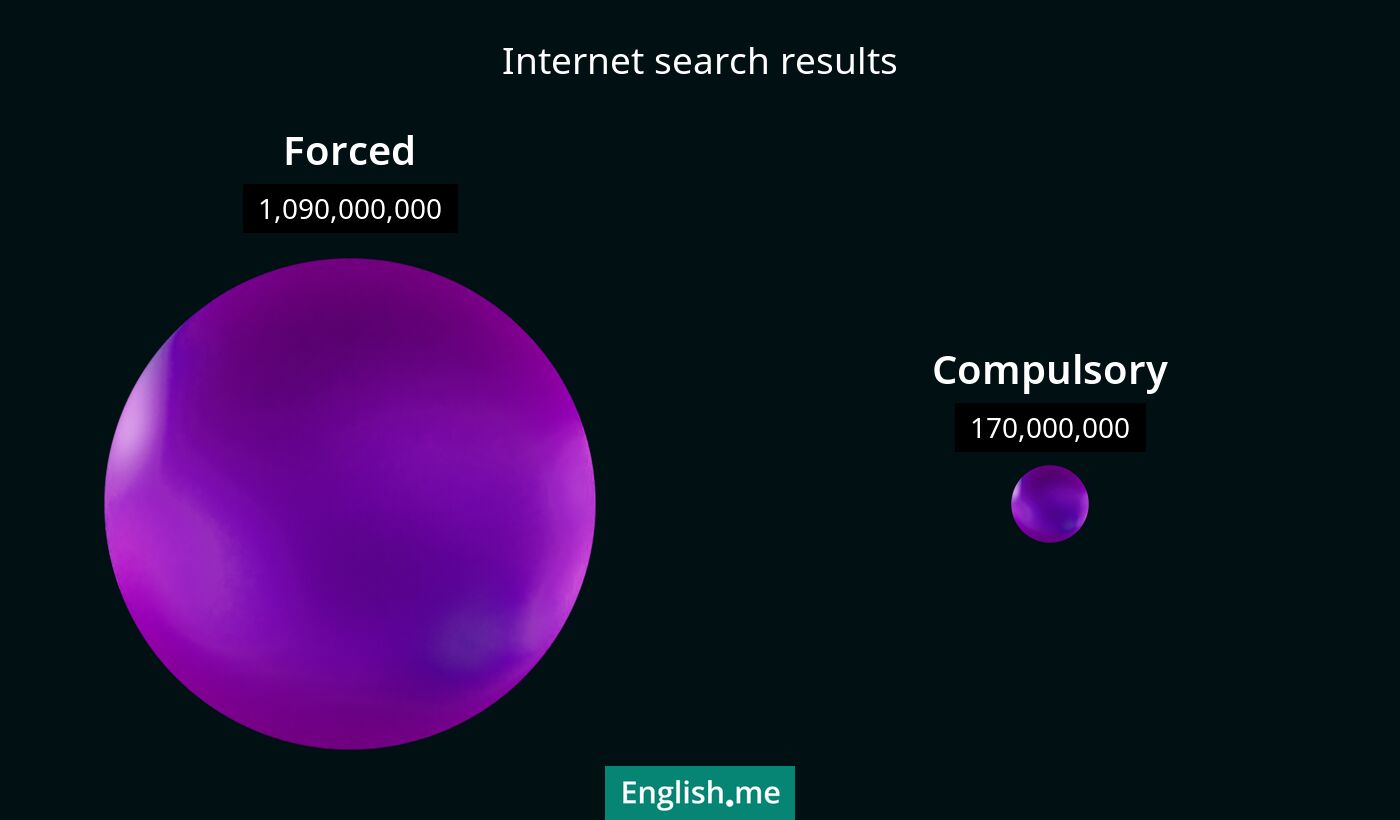Mandatory moves: comparing "forced" and "compulsory"
Reviewed and edited by  Lloyd Cooper 19/11/2024, 05:38
Lloyd Cooper 19/11/2024, 05:38
English.me team member

 What is similar?
What is similar?
Both "forced" and "compulsory" imply a lack of choice and describe actions or conditions that are imposed on someone or something. They both suggest that something must be done or is unavoidable.
 What is different?
What is different?
"Forced" often implies use of coercion or pressure to make someone do something, and can be used in various contexts including physical force. "Compulsory" generally refers to requirements set by rules or laws, and is more commonly used in formal, institutional, or bureaucratic contexts.
 Which one is more common?
Which one is more common?

 Examples of usage
Examples of usage
Forced- She was forced to leave the house because of the fire.
- He was forced to apologize after the misunderstanding.
- The coach forced the team to run extra laps.
- Wearing a helmet is compulsory for all cyclists.
- The course includes several compulsory subjects.
- Attendance at the meeting is compulsory for all staff members.

 English
English español
español française
française italiano
italiano deutsche
deutsche 日本語
日本語 polski
polski česky
česky svenska
svenska Türkçe
Türkçe Nederlands
Nederlands